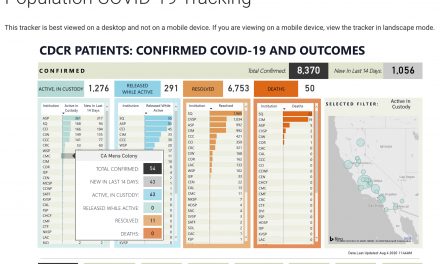By Joe MacFarlane
It was six thirty on a cold morning late in March. It was an eerie scene, with 300 people standing in a silent group before a line. An ancient brick building loomed to one side, overshadowing the scene. Some swung their legs and set timers while others gulped down a last-minute gel. Most stood in anticipation, determination written over their faces, breaths producing ghosts in the air. Then the sound: an airhorn, unreasonably loud, broke the silence. The hushed runners abandoned their positions and their silence, breaking into a wild run, many whooping with joy. The 2018 Atascadero Tent City Marathon looked like any other race but differed in a couple of ways. This was its first year and it served as a fundraiser for a shabby, old brick building known as the Atascadero Printery.
The Printery was built by Atascadero’s founder, E. G. Lewis, in 1915 and was the colony’s first completed administrative building. The building was about 16,000 square-feet and employed 200 workers. The Printery was the lifeblood of the early colony as it produced publications promoting Atascadero, encouraging people to move to the young community. It was quickly outfitted with the largest rotogravure press west of the Mississippi River and produced its first issue of the Atascadero News in January of 1916.
Later that year it introduced a novel experiment: The Illustrated Review, a magazine of photographs instead of words. The first subscription price for the Illustrated Review was ten cents per year. The magazine sought to accurately display life through pictures. So, for its first few years, it included pictures of World War I. By 1917, nearly one million copies were being printed and circulated. This is noteworthy since the population of San Luis Obispo County at the time was 21,000. The Illustrated Review’s fame grew rapidly until it could be bought off of the newspaper stands in New York City.
Because Atascadero’s printing press was the only rotogravure press on the west coast, it printed a lot of supplemental material for the San Francisco Chronicle, the LA Times, and Sunset Magazine. As E. G. Lewis’ wife was a women’s rights activist, the press also printed many bulletins promoting women’s rights. The Illustrated Review lost popularity in the early 1920s, causing the publication to end in 1924.
The end of the Printery caused the building to enter its next phase of use by a variety of owners. It was sold to serve as a southern satellite campus for an exclusive boys’ prep school. It then was used as a junior college for a period until it was bought by the Masonic Temple Association in 1950.
For several decades, it was used as the meeting place for the Atascadero Masonic Lodge. During this time, it served as one of many substations for the San Luis Obispo County Sheriff’s Department, provided office space for the Atascadero Unified School district, gave a photographer a place to live and a studio to work, and watched a karate school flourish on the old printing press floor. The 6.5 magnitude earthquake of 2003 rendered the Printery unsafe to occupy, ending the thriving public use of the building.
The Masonic Temple Association had given the building to the City a few years before the earthquake under the condition that the City would continue to provide youth services. However, after the earthquake, because of the money required to repair the structural damage, the Printery remained vacant from that point on, quickly becoming a home for pigeons and a popular site for vandalism.
In 2015, the Atascadero Printery Foundation was started with a very specific goal: to reclaim, rehabilitate, and repurpose the Atascadero Printery. In 2016, they managed to buy the Printery in an auction with a bid of $300,100. The APF is currently in the rehabilitation stage. Because of the earthquake, weather, vandalism, and fifteen years of disuse, it is estimated that at least $6 million is needed to bring the building back to full functionality.
The APF has initiated a number of fundraisers to raise this money, chief among these being the Tent City Marathon, which will be put on a second time in April of 2019. However, the APF hopes to raise the bulk of the needed funds with grants and bonds from the City and state. Already, they have cleared the grounds, cleaned the interior, replaced the broken windows, installed security cameras to prevent further vandalism, and drawn up comprehensive architectural plans.
Many do not see the significance of the Printery and see the restoration of the dilapidated building as a fool’s errand and a waste of money. To this, APF board member Nicholas Mattson said, “That old building was the first piece of Atascadero.”
The Printery was completely built before Hearst Castle’s construction was started and is listed under the National Register of Historic Places. The APF’s vision is to restore the Printery to be a source of vitality for the community and a place for youth to go. And with the addition of a planned amphitheater, it will provide a venue for theater, concerts, performances, comedy, and movie nights. Although it has a long way to go before full restoration, the Printery is on its way. Soon people will be heading down to the Printery for some middle school theater or an art gallery.
Publisher’s Note: We thank Joe MacFarlane for his interest in local history, and his research into the Atascadero Printery Building. We hope that you will follow suit and get involved. We need Joes.












